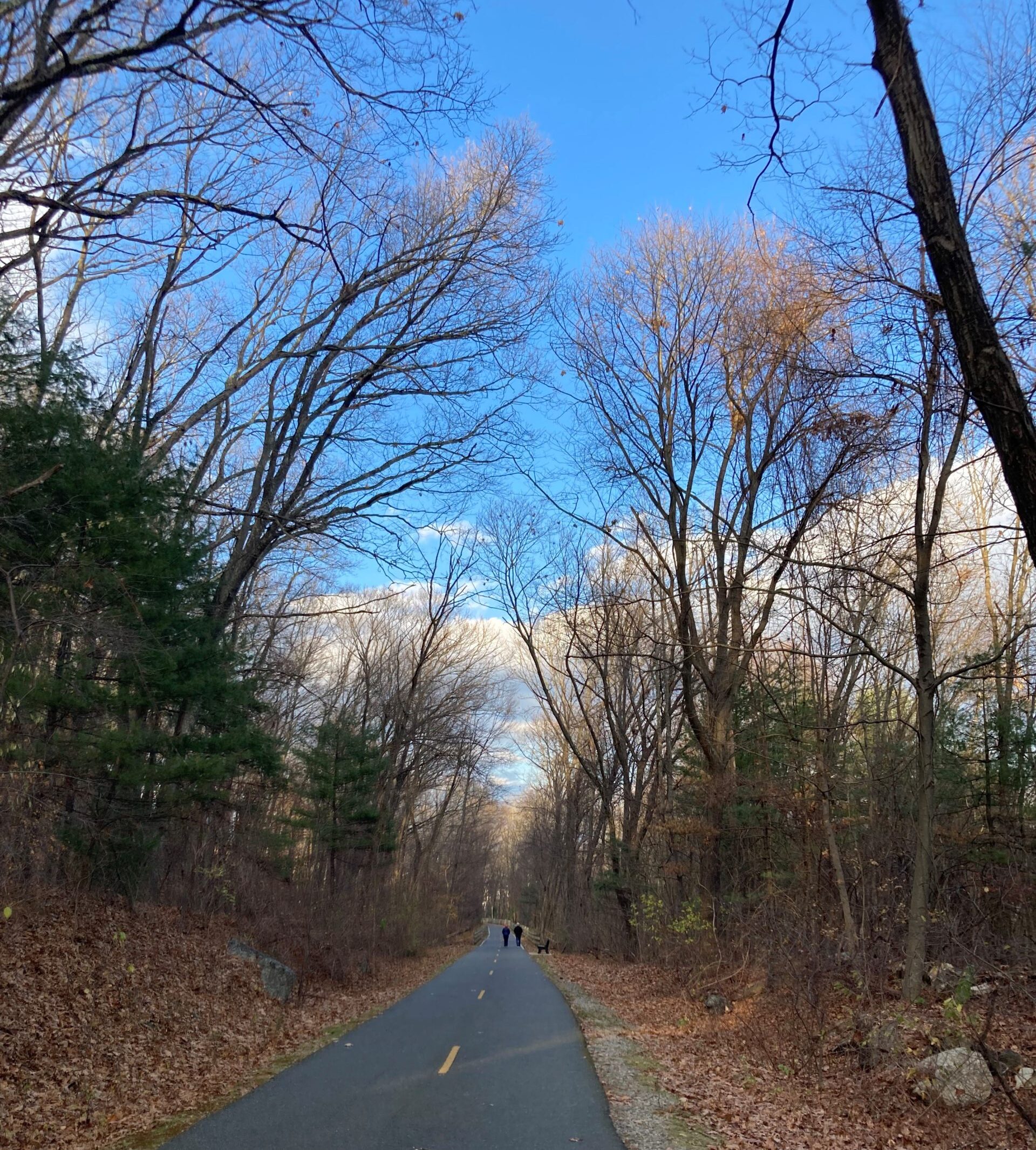The reason a dog has so many friends is that it wags its tail instead of its tongue.
-unknown
The days have turned cool, with highs in the low 50s and the lows in the high 20s. Most of the leaves have fallen to the ground, leaving their trees with bony fingers reaching up into the sky. The undergrowth has died back except for a few hardy vines that still display some meager greenery. Squirrels are out in large numbers, gamboling loudly in the crisp dead leaves. There are either more there, or I can see more of them because I can so easily hear them and they can’t hide so well without the screening foliage. There seem to be fewer birds around, judging from the lack of song – most must have already headed south.
Waldo and I are still here, though, trekking along the trail, watching the season slowly progress. Waldo is happy as ever, as evidenced by his wagging tail. Whenever someone, or some other dog, approaches, he is particularly vigorous with his posterior appendage, swaying it around on one side, then the other, until he gets close, and then his entire caboose is oscillating with a purpose. I’m pretty sure that’s his way of letting others know his intentions are friendly and not aggressive – sort of like how people will greet each other with a smile and a handshake. But it makes me wonder, why did dogs evolve that particular bit of body language to telegraph their lack of evil intent?
I’ve read that many believe the handshake was created, in prehistorical times, as a method to show that those clasping hands don’t have any weapons in them and are of no threat. More recently, tablets from Babylon, made 3,000 years ago, have been found bearing an embossed picture of two rulers shaking hands, so it’s been a thing for a very long time. If this behavior is really so well thought out, though, it makes me wonder if it isn’t learned, instead of instinctual. Facial expressions, as far as I know, have pretty much the same meaning across human cultures – a smile means the same thing to everyone. So maybe facial expressions in humans are instinctual.
A dog’s wagging tail can also bear the meaning that they lack harmful intent. Not because they can’t hold weapons in the wiggling part that’s the last to go over the fence, but because they can’t lunge aggressively while thrashing the thing about — it would throw them off balance. They clearly use many different kinds of body language to show the lack of intent to cause harm, including not baring their teeth, not making loud aggressive noises, like growling, holding their head low and assuming a relaxed posture that doesn’t presage an attack. I doubt any of that is learned, though. It seems to be universal among dogs and similar animals and I’m pretty sure it’s instinctual. Funny thing is, our ancestors had tails, yet I don’t think people have any residual impulse to shake our vestigial tails and butts when we’re meeting friends or if we’re happy. Maybe I’m wrong about that, though.
Other animals that have tails, like birds, don’t seem to have the same impulse to shake them. Of course, their ancestors evolutionarily separated from ours and those of dogs, many hundreds of millions of years ago, so maybe tail wagging was a later development. More advanced, so to speak. As far as I know, birds don’t sniff each other’s butts either, but it’s hard to think of that as advanced behavior. Yet, I would be willing to bet that, if tail wagging is instinctual, then it has some evolutionary advantage over not wagging tails.
I’m guessing that dogs, like people, being social creatures whose survival was improved by joining together in groups, needed some way of signaling to each other that they desired harmless interaction with each other. Interaction that enhanced their bonding together. Then tail wagging wouldn’t have any direct survival advantage, but was just a convenient means to that end. It’s thought, for example, that 80 percent of the time when people laugh, it’s not because of something funny. It’s because they want to telegraph that what they are saying or doing is not intended as a threat — laughing reinforces socialization. Maybe tail wagging in dogs does something similar.
Or maybe we’re all missing out on a hidden pleasure that dogs know so well. Just maybe the joy of meeting a friend can be enhanced by shaking your booty as you do it.
What the hell, it’s worth a try…



